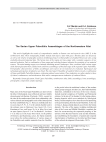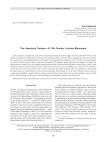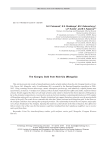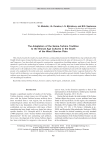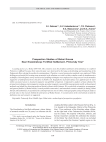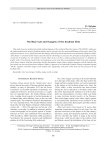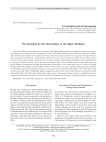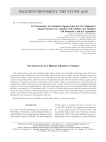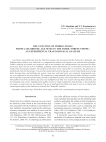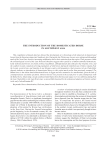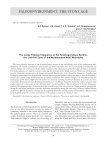Статьи журнала - Archaeology, Ethnology & Anthropology of Eurasia
Все статьи: 351
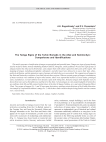
The Tamga signs of the Turkic nomads in the Altai and Semirechye: comparisons and identifications
Статья обзорная
Бесплатно
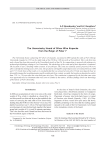
The Umrevinsky hoard of silver wire kopecks from the reign of Peter I
Статья научная
The Umrevinsky hoard, comprising 107 silver wire kopecks, was found in 2008 outside the walls of Fort (Ostrog) Umrevinsky, founded in 1703 on the right bank of the Ob River, 100 km north of Novosibirsk. This is the fi rst time such a hoard has been discovered in the Novosibirsk stretch of the Ob. Its composition is assessed with reference to archaeological fi ndings relating to Fort Umrevinsky. The chronology of the coins and of their deposition is evaluated. The location is near a dwelling within a manor, in an ash-layer. The coins are relatively poorly preserved. We were able to identify the minting-years of 34 coins. All specimens with legible stamp-impressions were minted between 1696 and 1717. On the basis of the results, it is concluded that this was a hoard of coin-silver. Firstly, most kopecks bear no discernible images that would guarantee specifi c weight and silver content; secondly, the hoard was deposited no earlier than 1735, i.e., 20 years after the coins had gone out of use. This conclusion is supported by the fact that some coins were apparently used as ornaments that were sewn on clothes by the natives. All these fi ndings enrich our knowledge of the history of Fort Umrevinsky.
Бесплатно
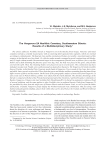
The Vengerovo-2A Neolithic cemetery, Southwestern Siberia: results of a multidisciplinary study
Статья
Бесплатно
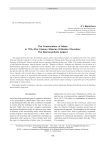
The consecration of altars in 17th–21st century Siberian orthodox churches: the neurosymbolic aspect
Статья обзорная
Бесплатно
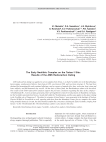
The early Neolithic complex on the Tartas-1 site: results of the AMS radiocarbon dating
Статья
Бесплатно
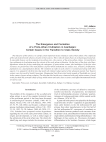
Статья научная
The objective of this article is to clarify certain important issues relating to early urban culture. The complexity of the task stems from the absence of early written sources. This is why the study draws on archaeological materials. It especially focuses on the incipient proto-urban sites—the sources of the proto-urban culture. Certain Bronze Age settlements in Azerbaijan meet the criteria of the early urban civilization. On the basis of the facts cited here, hypotheses about the factors underlying the emergence of proto-urban centers (the harbingers of the first class societies) are put forward. The main features of proto-urban settlements are surface area, structure, fortifications, population size, and population density. The evolution of crafts in such centers is reconstructed along with other aspects. It is argued for the first time that nearly all cultural values typical of the advanced ancient Near Eastern centers were borrowed by South Caucasians. Monumental Late Bronze Age burial mounds of Karabakh are viewed in the context of proto-urban evolution. The idea that elite burials were connected with early urban centers is based on the fact that only powerful chiefs of large tribal unions and early class societies could afford monumental burials on such a scale.
Бесплатно
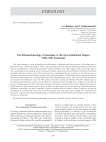
The ethnoarchaeology of Russians in the Syro-Palestinian region (18th-19th centuries)
Статья обзорная
Бесплатно
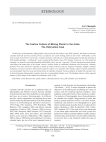
The festive culture of mining plants in the Urals: the Dobryanka case
Статья научная
On the basis of documentary ethnographic sources from the late 19th to early 20th centuries, the study reconstructs calendar festivals and rites of that period, recorded at one of the mining plants in the Urals—Dobryanka, in the western part of the Perm Governorate. Common festivals celebrated at Uralian mining plants include the greeting of birds (kashke-plishke), “sending off” water (seeing off the Kama), Day of St. Sergius, Pentecost, etc. The industrial calendar was related to the main household and holiday cycles; special “corporate” festivals emerged at private plants, coinciding with name-days of the plants’ owners; archaic forms of traditional ritualism were preserved; calendar festivals were more and more regarded as forms of leisure with less and less religious meaning; multiple calendar traditions coexisted; and new urban forms of festive culture were adopted. The holiday culture of plant settlements was intermediate between rural and urban forms of calendar ritualism. Each peculiarity of industrial calendar rites is described using ethnographic examples from the corresponding holiday cycle. The findings indicate rather unusual features of folk culture in the industrial settlements of the Urals.
Бесплатно
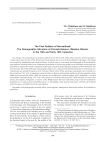
Статья научная
Sex and age were determined in a skeletal sample from an 18th to early 19th century cemetery at Krivoshchekovo, a rural center since the mid-1790s. Historical records mention the area as the Krivoshchekovo Ob region. The village was founded by immigrants from European Russia. Archival sources concerning the demography of Krivoshchekovo were analyzed, mortality tables were constructed, proportions of various age groups were calculated, and average age of death was estimated for adults. Limitations of the study stem from the fact that the population of Krivoshchekovo was not stationary. The results of the paleodemographic analysis are compared with information from two archival sources: confessional lists and parish registers of St. Nicholas Church, where births, marriages, and deaths were recorded over the period from 1763–1841. Comparative material relates to Russian old residents and the local Tatar population of the Omsk Irtysh region in the 1600s–1800s. Sex and age were estimated in a skeletal sample of 462 individuals—one third of the number of deaths during 1763–1841, when people were buried at the graveyard. Child mortality was lower than among old residents, immigrants, or natives of the Middle Irtysh. The most vulnerable group in the Krivoshchekovo population were young women and children aged 1–4. The findings of the skeletal study agree with those derived from archival sources, and likely mirror the real situation.
Бесплатно

